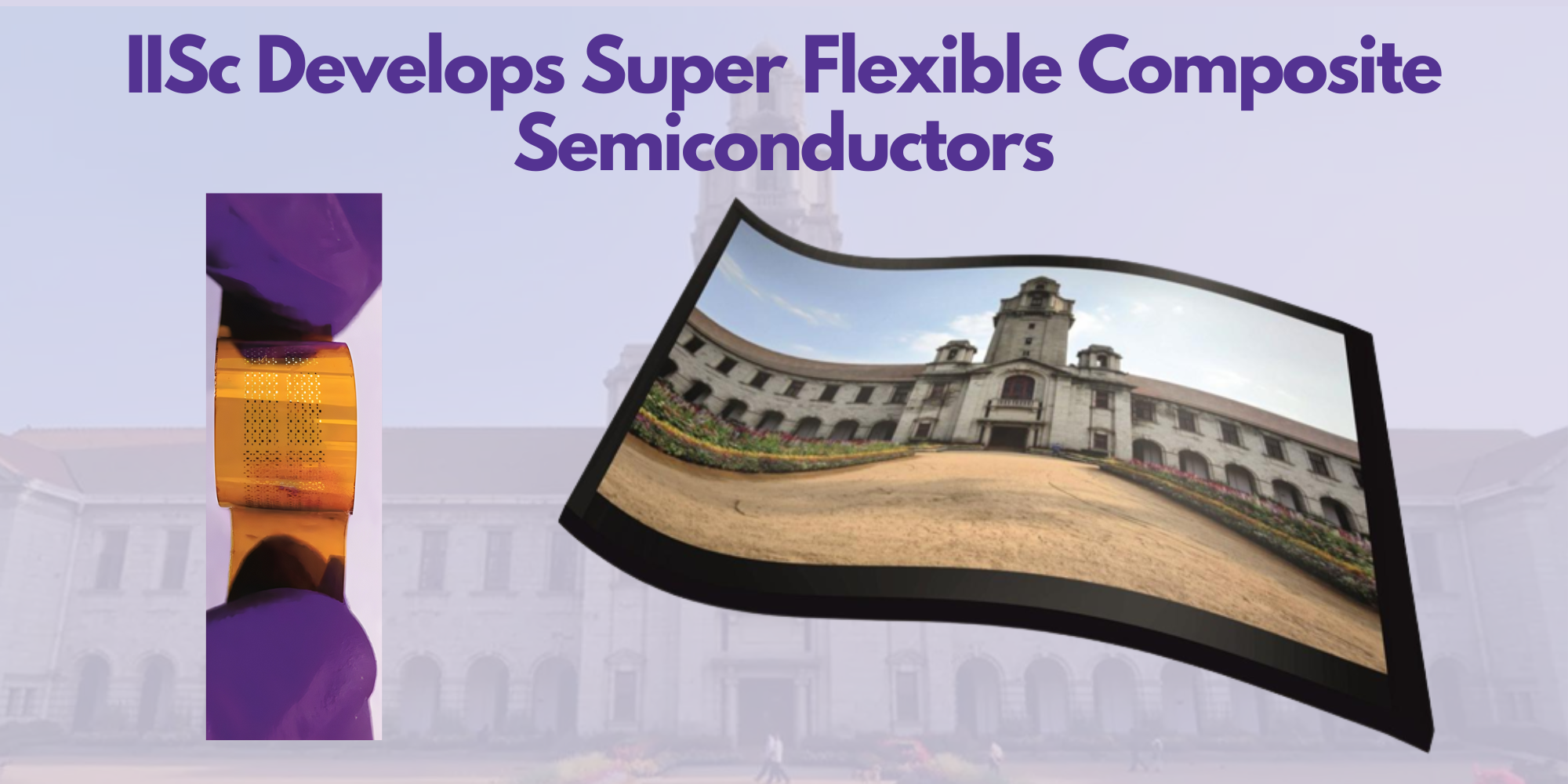
Within the realm of electronics, silicon or amorphous oxide-based transistors have held a steadfast position as fundamental components of circuits. However, their rigidity and lack of strain tolerance pose a significant hurdle to the evolution of technology towards flexible and wearable devices.
Efforts to solve this dilemma by merging polymers with oxide semiconductors have yielded unsatisfactory results. The polymers add flexibility but at the cost of semiconductor performance – a compromise which until now seemed inevitable.
A Quantum Leap in Material Engineering
Scientists at the Indian Institute of Science (IISc) in Bangalore have shattered these constraints with a revolutionary study published in Advanced Materials Technologies. They have unveiled a composite with an astonishing 40% polymer content, a quantum leap from the previous benchmark of just 1-2%.
This breakthrough has been made possible through a pioneering solution-process technique: inkjet printing. The resultant composite semiconductor marries the flexibility of a water-insoluble polymer (ethyl cellulose) with the high-performance electronic transport properties of indium oxide. The result is a super-flexible and foldable material that does not compromise on its electronic capabilities.
Subho Dasgupta, an Associate Professor in the Department of Materials Engineering at IISc and the corresponding author of the study, points out, “The phase separation and formation of polymer-rich islands aid in arresting cracks, contributing to the super-flexibility of the material.”
Redefining Conventions: The Inkjet Printing Method
In a departure from traditional sputtering deposition techniques, the IISc team employed inkjet printing to deposit their composite material onto various flexible substrates, extending from plastics to paper. This approach, despite its inherent challenges, promises broad applications, as they successfully printed semiconductor-based transistors on a flexible Kapton substrate.
A Glimpse into the Future: A New Era in Tech Industry
Professor Dasgupta anticipates a future where these innovative semiconductors play a crucial role in manufacturing fully flexible television screens, wearable technology, and large electronic billboards. This innovation, coupled with printed organic light-emitting diode (OLED) display front-ends, holds the potential to overhaul the display industry by significantly reducing manufacturing costs.
Having secured a patent for their groundbreaking material, the IISc team now focuses on evaluating its shelf life and maintaining quality control across different devices. As they forge ahead with their research, they stand on the brink of an era where rigidity in electronics bows to adaptability, paving the way for the next generation of flexible and foldable technology.



![Read more about the article [Funding roundup] Pratech Brands, Hubble, Zipy, Jobsgaar, PaySprint, and Tealfeed raise early stage funds](https://blog.digitalsevaa.com/wp-content/uploads/2022/03/V-05-1600852077699-300x150.png)




![Read more about the article [Jobs Roundup] Keen to redesign millennials’ financial experience? Try these roles with fintech startup Slice](https://blog.digitalsevaa.com/wp-content/uploads/2021/03/Image36rr-1615958751816-300x150.jpg)

